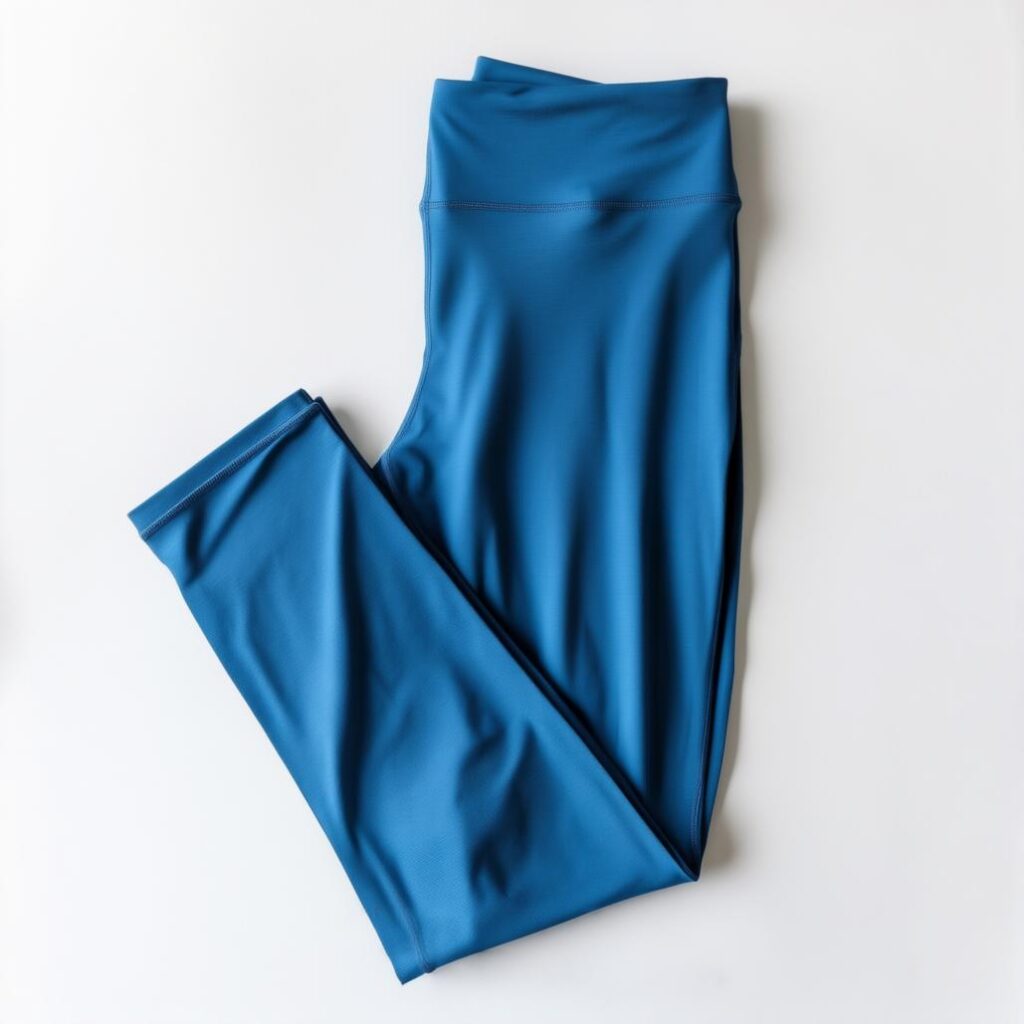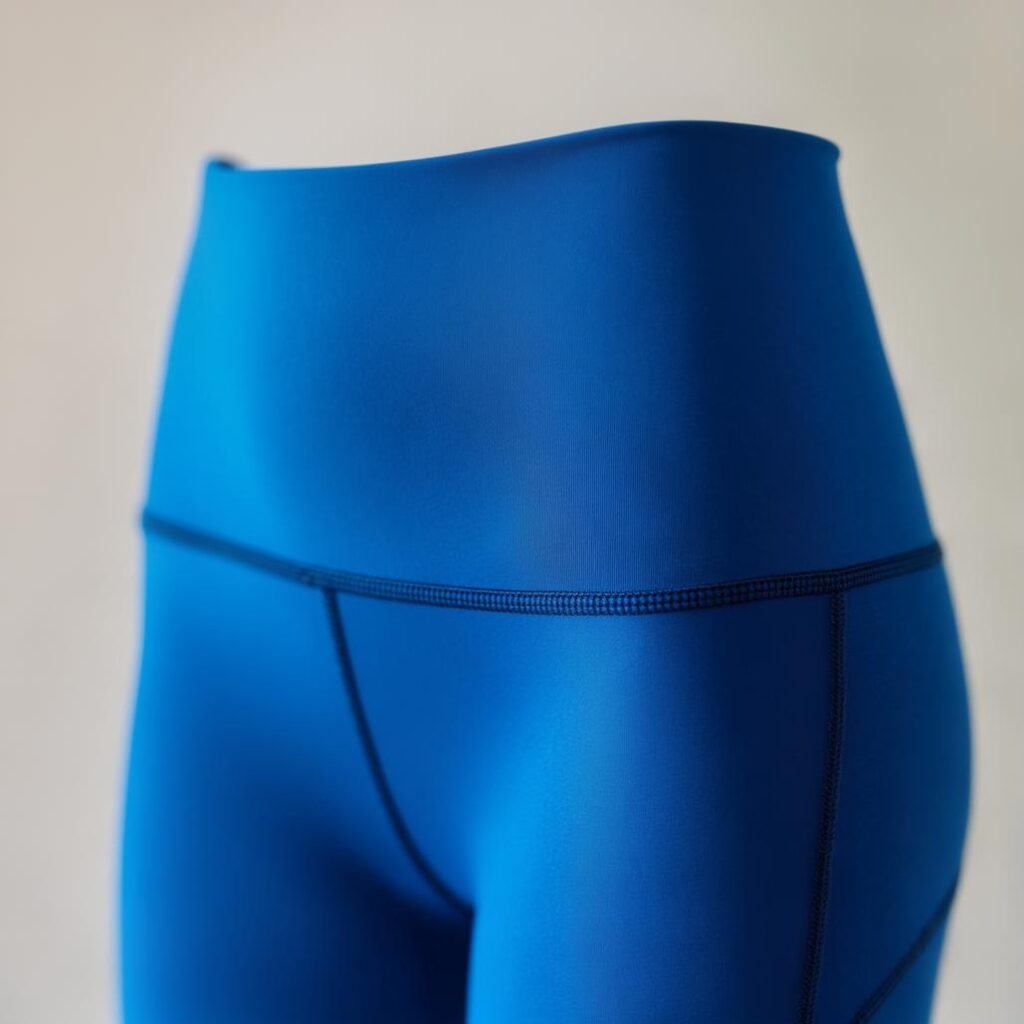Shopping for leggings can be overwhelming with so many fabric choices available. Have you ever felt confused about the fabrics? With variable leggings, What are the differences between spandex, Lycra, nylon, and cotton, and which one should you choose? This guide will walk you through everything you need to know about legging fabrics, make you feel confident in your next purchase and be able to select the best fit for your needs. In this article, you will clarify the confusion directly.
 Difference Between Leggings and Spandex.
Difference Between Leggings and Spandex.
Leggings and spandex are terms often used interchangeably, but they refer to distinct concepts in the world of apparel. Whether you’re shopping for workout gear, casual wear, or fashion-forward outfits, understanding their differences—and knowing the best materials for leggings—can help you make informed choices. Let’s break it down.
Definitions
Leggings: These are tight-fitting garments that cover the legs, typically extending from the waist to the ankles. They serve various purposes, including athletic wear, casual fashion, layering, or even as thermal underwear. They are thicker than tights and can be worn in place of pants. Leggings are commonly made from a blend of cotton or polyester knit combined with spandex. This blend provides durability and allows leggings to be worn as pants. Such as:leggings with pocket
Spandex: Also known as elastane or Lycra®, spandex is a synthetic fiber prized for its exceptional elasticity. It’s not a garment but a material used to add stretch and flexibility to fabrics. It’s a lightweight material made from a polymer called polyurethane. Spandex is not usually worn alone but is blended with other fabrics like cotton, nylon, or polyester to add stretch to clothing.
Primary Roles
Leggings are clothing items designed for coverage, comfort, or performance.
Spandex is a material component blended with other fibers (like nylon or polyester) to enhance stretch and shape retention in garments, including leggings(women’s gym leggings).
Material Composition
Leggings can be made from a variety of fabrics, such as cotton, polyester, nylon, or blends incorporating spandex.
Spandex is rarely used alone (it’s typically 5–20% of a fabric blend) and is combined with other materials to balance elasticity with durability.
When choosing leggings, a higher percentage of spandex (15% or more) is beneficial for workout leggings, providing ample stretch. For everyday leggings, a lower percentage of spandex (6% to 10%) offers a more comfortable feel.
Spandex is added to leggings to provide stretch and shape retention. Consider the percentage of spandex when shopping; higher for workouts, lower for daily wear.
 What Material is Best for Leggings?
What Material is Best for Leggings?
The best material for leggings depends on their intended use, be it for workouts, everyday wear, or warmth in cold weather.
Nylon-Spandex Blends: This combination offers durability, lightweight comfort, and sweat-wicking properties. It’s a versatile choice for both casual wear and workouts.
Polyester-Spandex Blends: Polyester provides water resistance and sweat-wicking capabilities, making it suitable for activewear.
Cotton-Spandex Blends: Cotton provides softness and breathability, while spandex adds stretch. This blend is comfortable for everyday wear but may not be the best for high-intensity workouts.
Wool: Ideal for cold climates, wool leggings trap air and provide warmth.
Know more about fabrics from our blog post: How to find the Right Yoga Clothing and Why Do You Need to?
 A Breakdown of Common Fabrics and Their Pros and Cons:
A Breakdown of Common Fabrics and Their Pros and Cons:
Nylon-Spandex Blends
Pros: Smooth, lightweight, and highly durable. Nylon resists pilling and moisture, making it ideal for high-intensity workouts. Blending with spandex (e.g., 80% nylon, 20% spandex) adds stretch and compression.
Cons: Can be less breathable than natural fibers.
Best For: Gym sessions(high waisted gym leggings), running, or dance.
Polyester-Spandex Blends
Pros: Affordable, moisture-wicking, and quick-drying(yoga leggings high waist). Polyester holds color well, so leggings stay vibrant after washing.
Cons: May trap odors more than natural fibers.
Best For: Everyday wear, casual workouts, or outdoor activities.
Cotton-Spandex Blends
Pros: Ultra-soft, breathable, and comfortable for all-day wear. Cotton provides a natural feel.
Cons: Less durable, prone to sagging, and slower to dry.
Best For: Lounging, low-impact yoga, or casual outfits.
Technical Fabrics
Eco-Friendly Options: Recycled polyester or nylon blended with spandex offers sustainability without sacrificing performance.
Bamboo Blends: Naturally antimicrobial and breathable, though less stretchy than synthetic options.
High-Compression Fabrics
These leggings use a higher spandex content (15–25%) for muscle support and a snug fit, ideal for training or recovery.
Key Considerations to Choose Leggings
Activity Level: Opt for moisture-wicking synthetics (nylon/polyester) for workouts; choose cotton or bamboo for relaxation.
Opacity: Thicker nylon or polyester blends prevent sheerness during bending or stretching.
Fit: Higher spandex content ensures better stretch and shape retention(high waisted workout leggings with pockets).
Sustainability: Look for OEKO-TEX® certifications or recycled materials if eco-friendliness is a priority.
